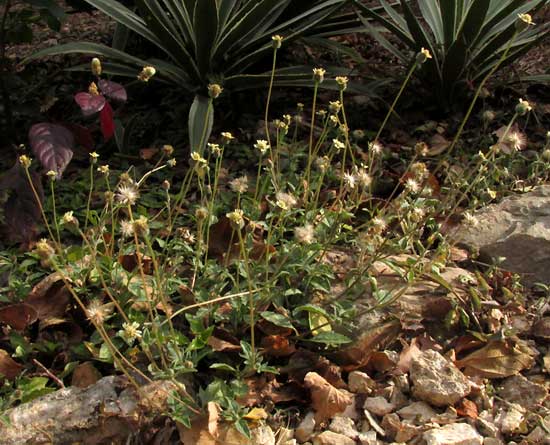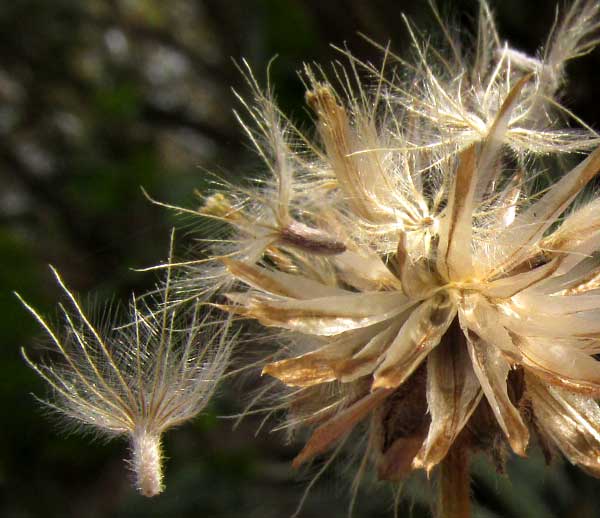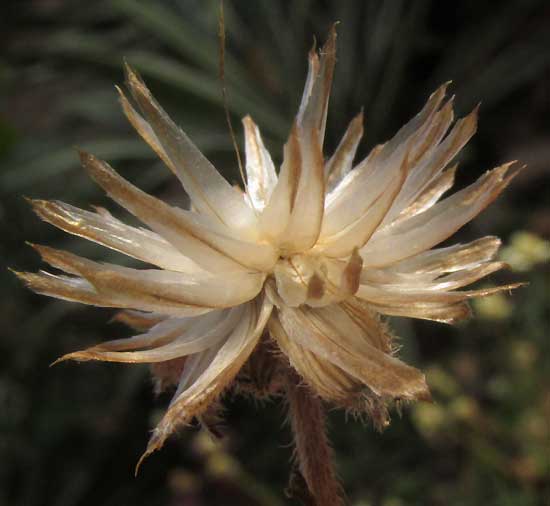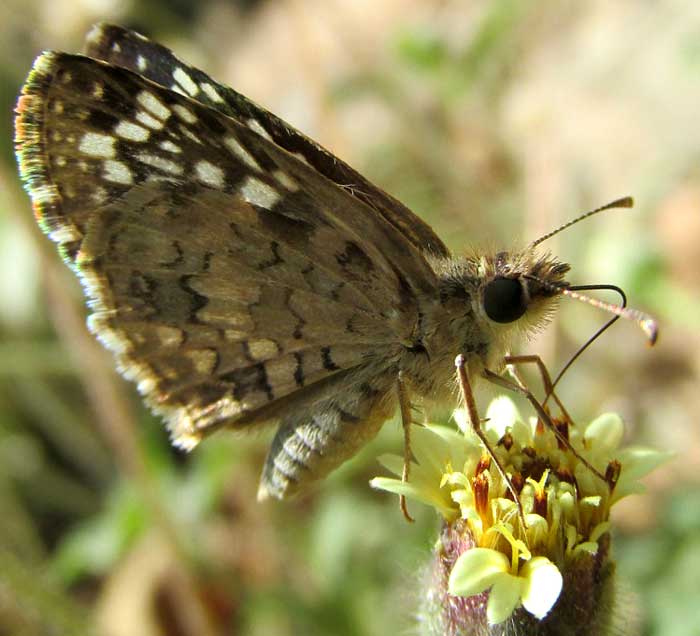Excerpts from Jim Conrad's
Naturalist Newsletter
from the March 6, 2016 Newsletter issued from Hacienda Chichen Resort beside Chichén Itzá Ruins; limestone bedrock; elevation ~39m (~128ft), N20.675°, W88.569°; central Yucatán state, MÉXICO
COATBUTTONS

I'd biked several kilometers of backroads looking for something new to write about, but there wasn't much, not only because I've been cruising those roads for years now but also because now in the dry season many things are dying back, keeping low profiles, basically just holding on until rains start up again around the end of May.
However, returning to the hut, right next to the gravel path where I water the Rubyleaf, a certain cat-high, sprawling, rangy-looking weedy herb caught my eye, apparently sustained by the Rubyleaf's waterings. It's shown below:

Notice how the plant's leaves cluster below leggy flowering-head stems, or peduncles. The leaves are rough-hairy and arise two per stem node -- are "opposite" -- as shown below:

Up close you see tiny flowers of two kinds crammed into flower-like heads exactly as is to be expected of the huge Sunflower/Daisy/Composite Family, as shown at the top of this page.
Field marks worth noting are that the petal-like outer "ray flowers" are deeply three-lobed and uncommonly short, broad and few in number, and that the scales, or "phyllaries," of the subtending involucre are densely long-hairy. Another feature very important during the identification process is that atop the mature cypsela-type fruits arise feather-like "plumose" hairs, as seen below:

In that picture you can see that as individual fruits mature and fall away, chaff-like scales -- the "paleae," which normally fall with the flowers or fruits -- stay behind, so that from a distance the heads of bristling sterile paleae look like flowering heads, as seen below:

Maybe such heads of papery paleae trick potential pollinators into thinking that more nectar-producing flowers are available than there are, thus increasing the chance of pollinator visits to flowers who do need pollinating.
While the above pictures were being taken I was struck by how many tiny bees and small butterflies visited the blossoms, such as the Tropical Checkered-Skipper, Pyrgus oileus, shown below sipping nectar:

Our humble little weedy herb is TRIDAX PROCUMBENS, commonly known as Coatbuttons or Tridax Daisy. It's native to tropical America, but has been introduced worldwide in tropical, subtropical and warm temperate regions worldwide. In the US it's listed as a noxious weed, has attained pest status in nine states, and is "regulated" under the Federal Noxious Weed Act.
Despite the US government's disdain for the little plant, the rainbow of pollinators visiting it suggest certain good points. In fact, the Internet is full of praise for it, mostly for its medicinal value.
For, it's described as antiviral, anti-oxidant, antibiotic, wound healing, anti-inflammatory, antifungal, antidiabetic, anti-arthritic, insecticidal and as efficacious against boils, blisters, cuts, diarrhea and dysentery. You might find it eye-opening to download a copy of an article in International Journal of Pharma and Bio Sciences entitled "Tridax procumbens (L.): A Weed with Immense Medicinal Importance: A Review," by Jain Ankita and Amita Jain, freely downloadable at http://www.ijpbs.net/vol-3/issue-1/bio/P%20-%2061.pdf.
So,you go out to find amazing things, but find nothing until you return to your own front yard.